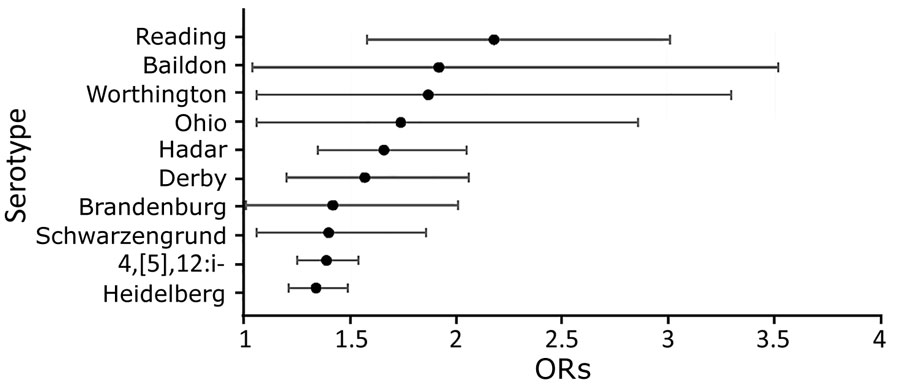Volume 28, Number 1—January 2022
Dispatch
Salmonella Serotypes Associated with Illnesses after Thanksgiving Holiday, United States, 1998–2018
Figure

Figure. ORs for Salmonella serotypes associated with the Thanksgiving holiday, United States, 1998‒2018. Error bars indicate 95% CIs. No significant positive associations with Thanksgiving were found among other serotypes with >50 patients who became ill during 2–9 days after Thanksgiving (i.e., Litchfield, Braenderup, Infantis, Senftenberg, Anatum, Dublin, Mbandaka, Typhimurium, and Javiana.) Serotypes with >50 patients inversely associated with Thanksgiving and significant p values include Poona (OR 0.77), Panama (OR 0.71), Newport (OR 0.93), and Paratyphi B var. L(+) tartrate+ (OR 0.75). These serotypes probably are associated with foods not eaten more frequently on Thanksgiving or other exposures not more frequently experienced on Thanksgiving than other times of the year. OR, odds ratio.